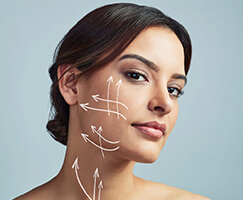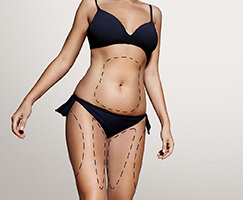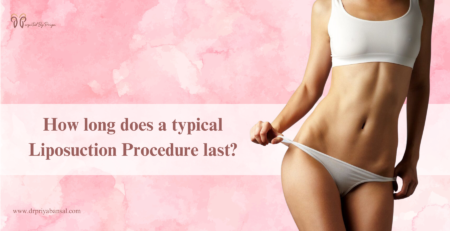What are Botox and Fillers?
Botox and fillers are a boon for those who are not willing to undergo surgery for skin and facial rejuvenation.
Botox: Botox is a wrinkle and crease treatment that professionals have been using for years. They’re also used to cure diseases including cervical dystonia (neck spasms), hyperhidrosis (excessive sweating), an overactive bladder, and lazy eye. Botox injections may also assist in the prevention of persistent migraines.
Fillers: Facial fillers are FDA approved liquid substances injected into the skin to soften wrinkles and hide them. A face filler injection is usually done as an outpatient surgery using topical anaesthetic medications.
Before & after Result

Different Types of Botox & Face Fillers
Botox – Botulinum Toxic Type A: Botulinum toxin is a popular injection that effectively reduces or removes face small lines and wrinkles. Botulinum toxin is a bacterial toxin that has been purified.
Botulinum toxin injections stop nerve impulses from reaching the muscle that was injected. The muscle cannot contract without receiving a signal. As a consequence, unsightly face wrinkles or looks are reduced.
Fillers – Hyaluronic acid: These fillers serve as a cushion and lubricant. For aesthetic applications, many types of hyaluronic acid are employed. Hyaluronic acid may impact how the body reacts to damage and assist in the reduction of swelling.
Ideal Candidate for Botox and Fillers
If you relate with any of the following, you are an ideal candidate for botox and fillers:
- Good Physical State
- Do not Smoke
- Realistic Expectations
- Positive Medical History
- Dedicated to Preserving Healthy Skin Condition
Botox – Procedure

Botox is a simple, quick and painless procedure. Botox is injected into targeted muscles using a tiny needle that causes very less pain. You can anticipate getting good results if you get your botox done with an expert practitioner.
Fillers – Procedure
Step 1: Examination and Mapping of the Face
If you opt for packaged soft tissue fillers, your plastic surgeon or a professionally qualified nurse will assess your facial look and skin tone and the parts of your face that will be enhanced.
The ideal injection locations for the filler may be indicated on your face at strategic areas. Your practitioner may ask to take photographs of your face where the fillers will be required.
Step 2: Anesthesia and Sanitising
In the second step, your doctor will use an antibacterial agent to clean the injection sites. Using a very cold device to cool the skin, anaesthetic lotion to numb the skin, or injection of local anaesthesia can all help relieve pain at the injection site. While the injections are not pleasant, they are typically well accepted.
Step 3: Employing Injection
The injection takes only a few seconds per location on average. The procedure of injecting, pressing, and assessing the outcome is followed, with extra filler being given as needed. The entire procedure takes 15 minutes or a maximum of an hour, depending on the number of places to be treated.
Step 4: Cleaning of Unnecessary Marks
Once the patient is satisfied with the results, all the marks will be removed to have a neat and clean appearance.
Schedule a Consultation
Recovery Period for Botox and Fillers

Botox Recovery
- It usually takes 7 to 14 days for the effects to emerge fully
- It is advisable to avoid smoking and alcohol for at least one week before surgery to have a smoother recovery.
- If possible it is advisable to avoid taking aspirin and anti-inflammatory medications a week before the treatment to avoid bruising.
- To avoid spreading the Botox to another region, don’t massage the injection site for 24 hours.
- Your doctor may also advise you to stay upright for 4 hours after the doses and avoid exercising for a day.
Fillers Recovery
- Each patient and each type of filler injected has a different recovery period.
- Most activities can be resumed soon away.
- Some vigorous physical activity should be avoided for the first 24-48 hours to prevent swelling and bruising.
- Before scheduling your injections, talk to your doctor about your recovery plan.
Choosing the Right Doctor!
Botox and fillers must only be administered under the supervision of a specialist. To avoid negative side effects, injections must be positioned properly. If administered improperly, the treatment can get severely harmful. Seek a recommendation from your primary care physician, or seek a specialist that specialises in your issue and has prior Botox and filler treatment expertise. A qualified and trained doctor can advise you on the process and help you decide if it is right for you and your wellbeing.
When it comes to delivering desired outcomes Dr Priya Bansal, a prominent plastic surgeon in India, is a name to reckon with. Dr Bansal has won the heart of her patients with over a year of expertise in the field of plastic surgery. As a female plastic surgeon, she is particularly sensitive to her patient’s aesthetic preferences and is dedicated to accomplishing the desired outcome.
Ensure to inform your doctor regarding your previous botox session. If you take pain meds, sleeping aids, or allergy drugs, notify your doctor. You may need to cease taking blood thinners several days before your injection to lessen your risk of bleeding or bruising.
It depends upon the targeted region and type of filler. Because most fillers fill the skin, they create quick or nearly instantaneous results. A filler can also encourage the production of collagen in your body.
You will be asked to visit your practitioner for several sessions to attain the expected results. The results also depend upon the kind of surgeon you choose and their expertise.
Temporary fillers provide one major benefit. They can be injected as needed to regain the lost fullness. This is useful since our skin ages regardless of what we do. However, if you want positive results, you should get your treatment done by an experienced professional.
Knowledge Centre
For Patient Education








